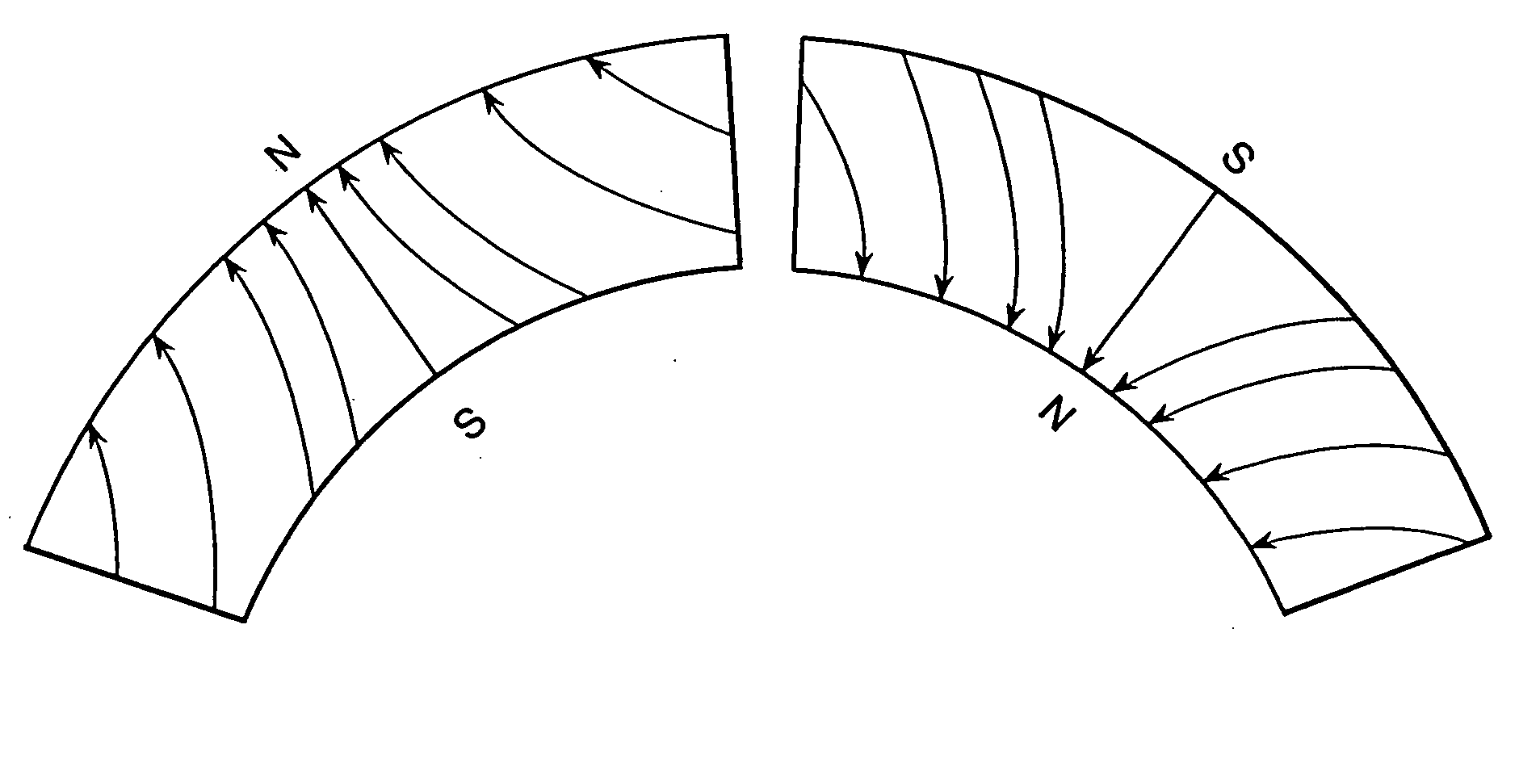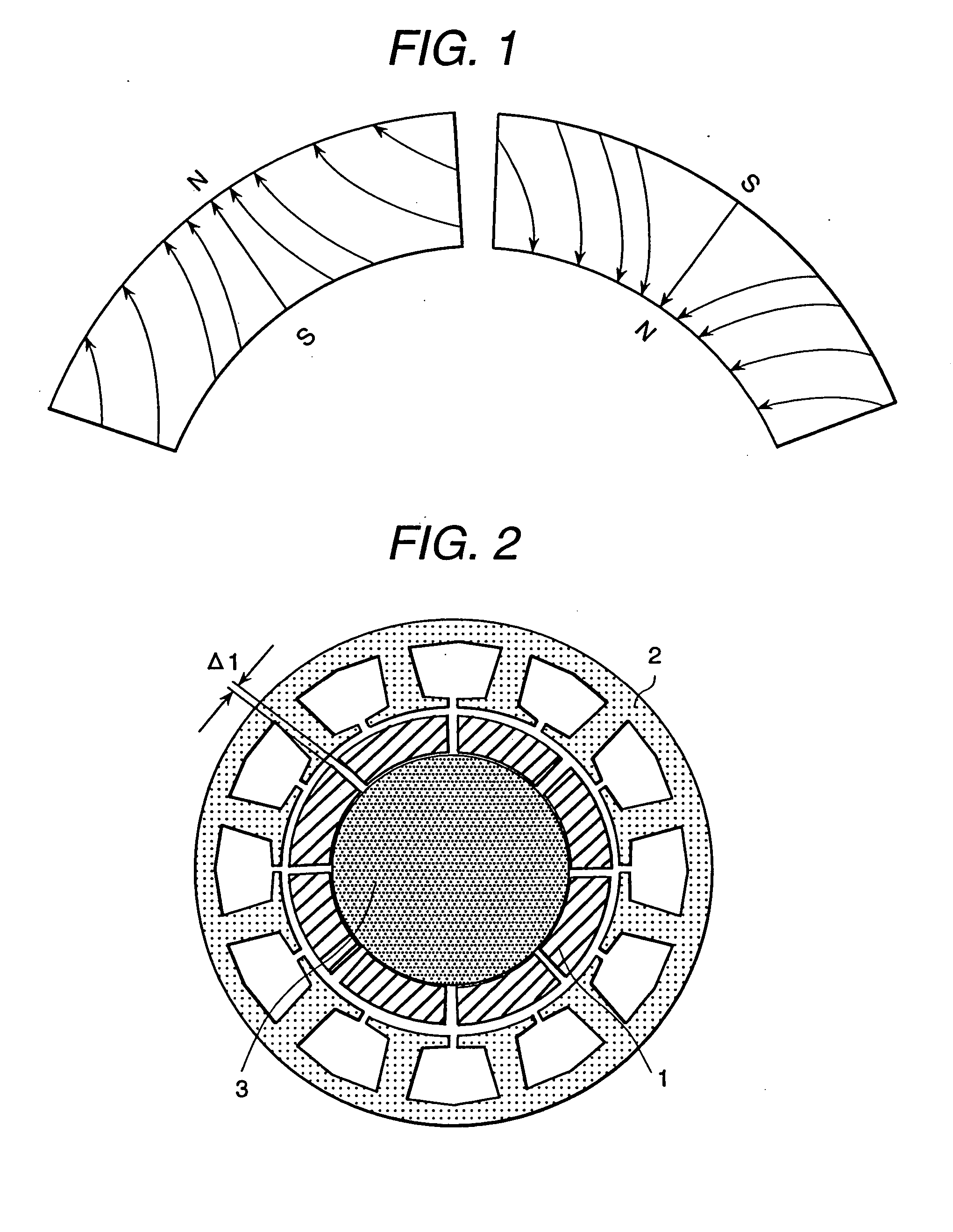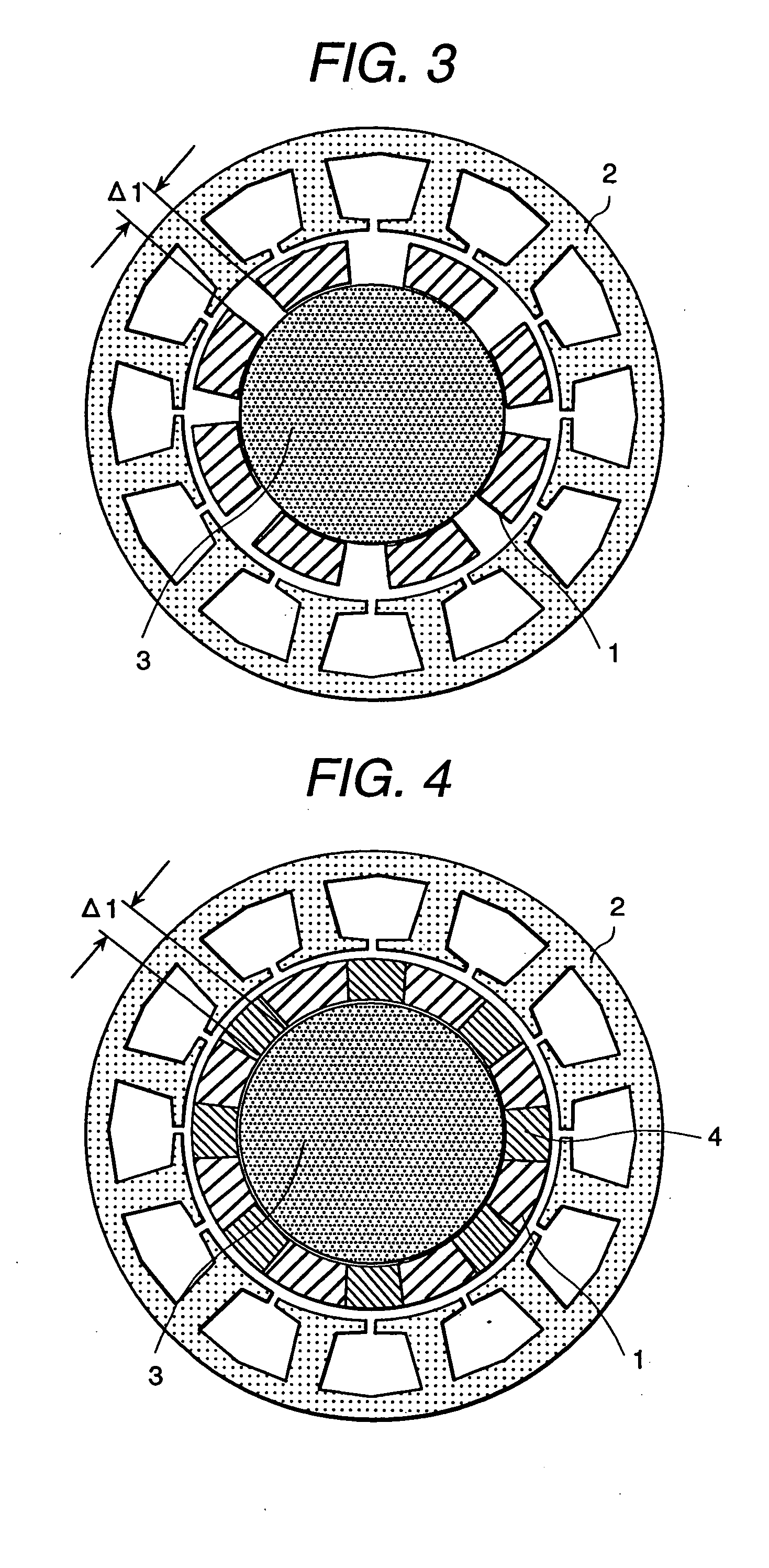Rotor, method of manufacturing the same and rotary machine
a technology of rotating motors and rotors, applied in the field of rotating motors, can solve the problems of low productivity of magnets comprising rear-earth elements, and the lowest productivity of magnets, and achieve the effects of reducing the amount of material used for magnets and reducing the deformation of sinusoidal waveforms in the surface magnetic flux density distribution
- Summary
- Abstract
- Description
- Claims
- Application Information
AI Technical Summary
Benefits of technology
Problems solved by technology
Method used
Image
Examples
Embodiment Construction
[0030]FIG. 2 is a cross-sectional view showing a rotor in accordance with the present invention. The number of poles should be two poles or more. FIG. 2 shows a case of 8 poles, and a ratio of (inner diameter) / (outer diameter) is 0.7 to 0.8. A magnet is segmented in the circumferential direction, and one segment of the magnet corresponds to one pole. A rotor shaft 3 is machined, and the surface of the rotor shaft is cleaned and applied with an adhesive. Then the segmented magnets 1 are fixed onto the rotor. In regard to magnetization of the magnets, there are a method in which the magnets magnetized before bonding are bonded onto the rotor shaft 3 and a method in which non-magnetized segmented magnets are bonded onto the rotor shaft 3 and then magnetized. Either of the above methods may be employed. After assembling the rotor, the rotor is set in the center of a stator 2. In the present embodiment, there exists a gap Δ1 in the circumferential direction between the segmented magnets....
PUM
| Property | Measurement | Unit |
|---|---|---|
| temperature | aaaaa | aaaaa |
| temperature | aaaaa | aaaaa |
| saturation magnetic flux density | aaaaa | aaaaa |
Abstract
Description
Claims
Application Information
 Login to View More
Login to View More - R&D
- Intellectual Property
- Life Sciences
- Materials
- Tech Scout
- Unparalleled Data Quality
- Higher Quality Content
- 60% Fewer Hallucinations
Browse by: Latest US Patents, China's latest patents, Technical Efficacy Thesaurus, Application Domain, Technology Topic, Popular Technical Reports.
© 2025 PatSnap. All rights reserved.Legal|Privacy policy|Modern Slavery Act Transparency Statement|Sitemap|About US| Contact US: help@patsnap.com



